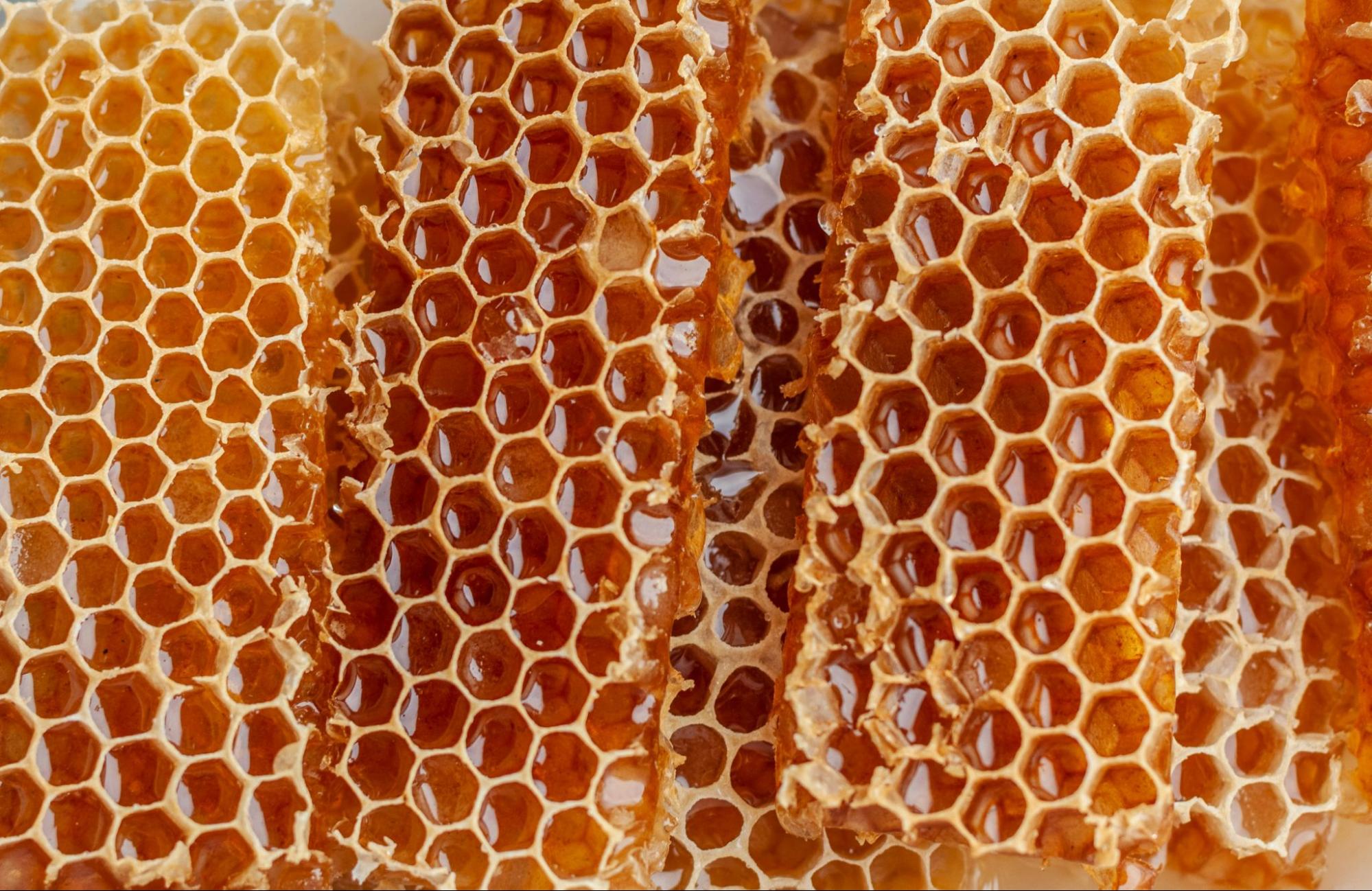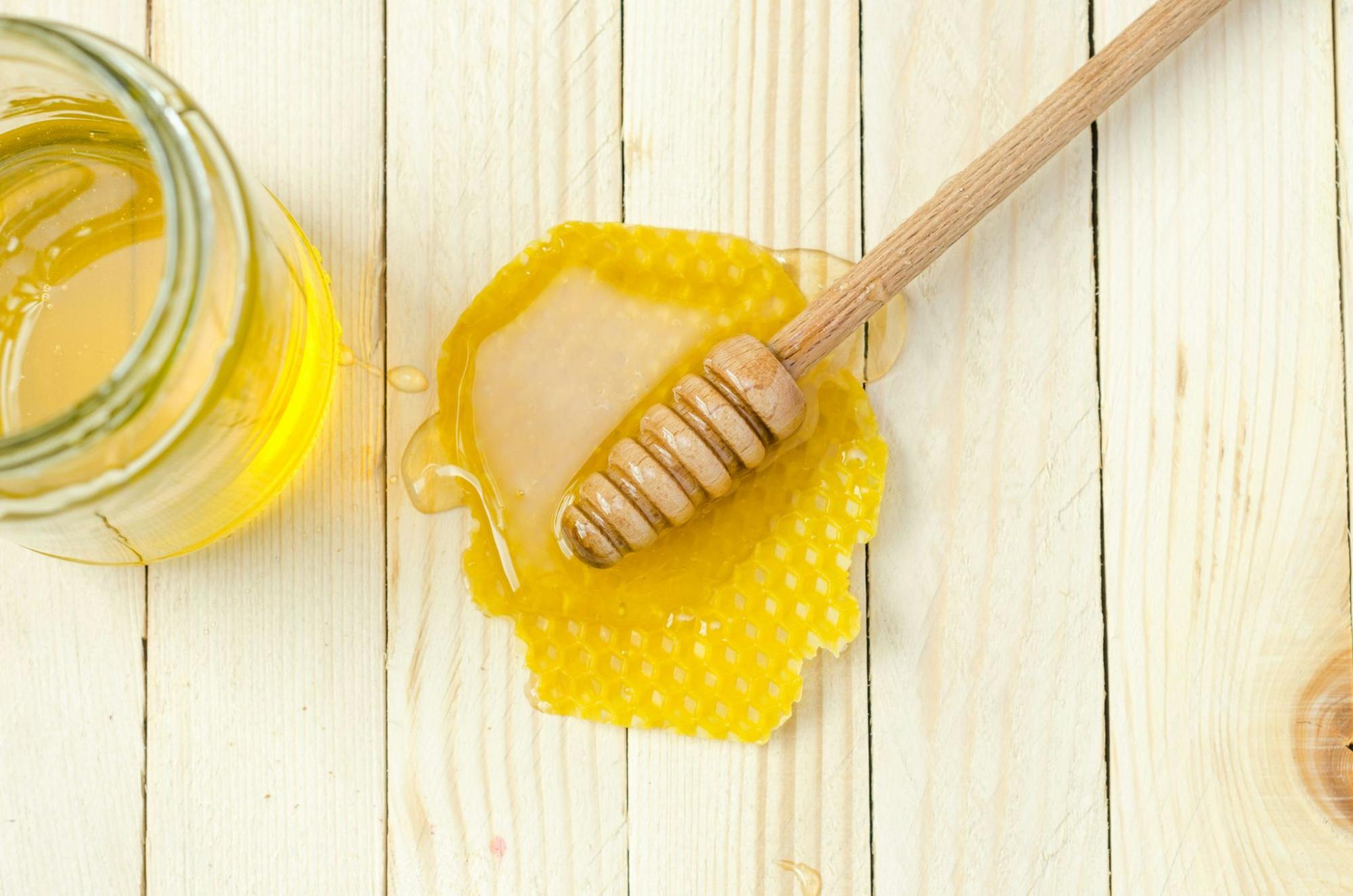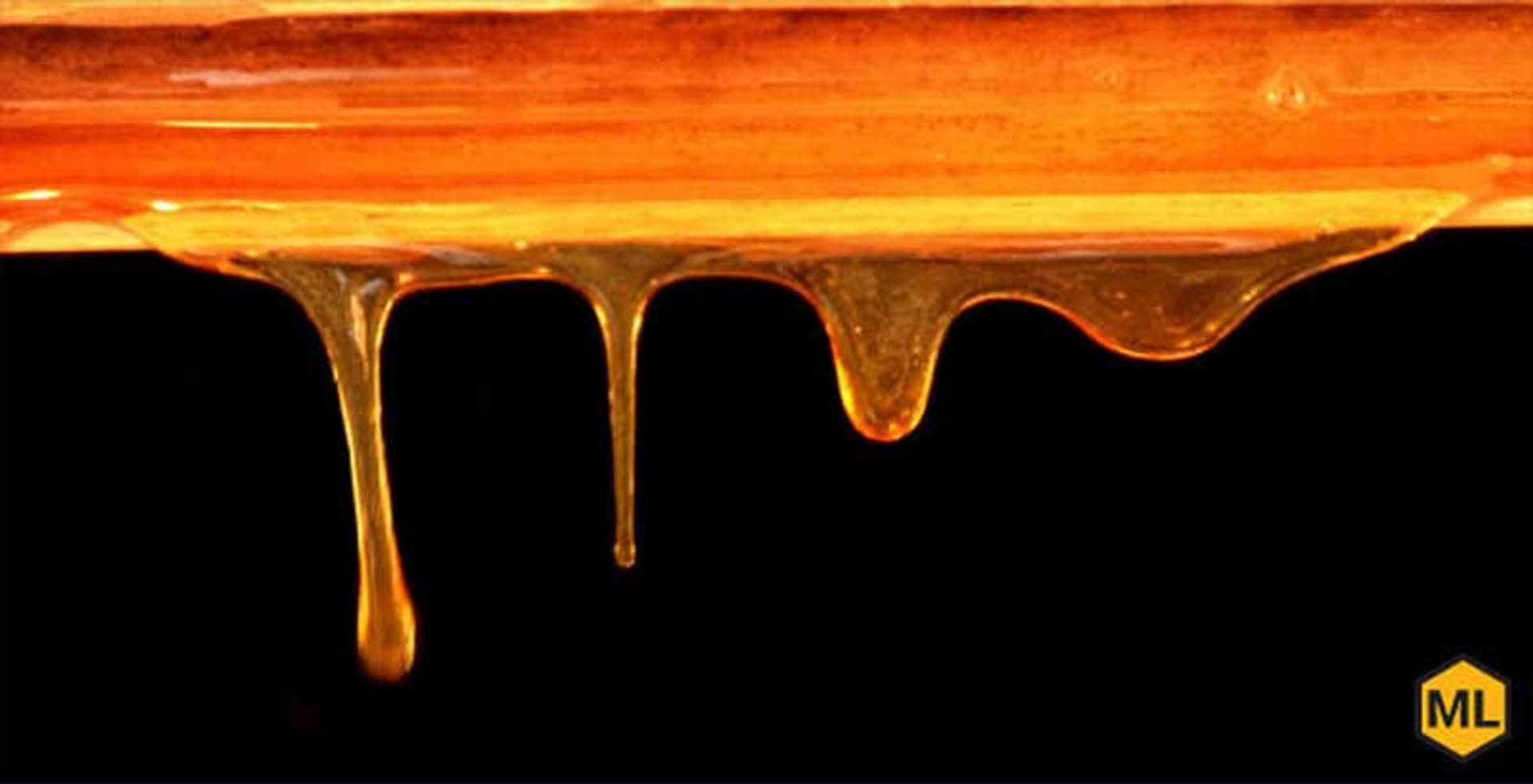What’s the Difference: Raw Honey vs Processed Honey?
You've probably heard the buzz about “raw honey” vs. “processed honey,” whether it's from fellow bee enthusiasts or spotted on labels in the grocery store. And you might be thinking, what's the big deal anyway? Well, the answer is—a whole lot!
In this blog, we're going to break down the sweet facts, showing you exactly what sets raw honey apart from processed stuff. Get ready for a deep dive into the sticky world of honey and discover why these two aren't created equal.
Overview of Honey
First, what is honey? It's pretty much nature's own perfect recipe, whipped up by the hardworking honeybees. Bees make honey by collecting nectar from flowers. The nectar contains a compound sugar called sucrose, the same sugar that is in white table sugar.
During the collection process, the bees mix this sugar (sucrose) with an enzyme called invertase. The enzyme invertase breaks down the sucrose into two simple sugars: glucose and fructose. This nectar also contains various enzymes, amino acids, and wild yeasts that are additional components of the final honey compound.
The bees store the “wet” nectar in cells where the inversion process continues. At this point, the honey is high in moisture. Due to the presence of wild yeasts, the honey can ferment. To prevent this from occurring, the bees dry the nectar down to a moisture content between 15% to 18.5%.
Once the moisture content is below 18.5%, the yeasts are unable to cause fermentation. At this stage, the honey is “ripe,” and the bees will cap the cell over with wax. We now have a product that contains nutrients and is in its best flavor.
| Enzyme Effect: Beyond invertase, bees use other enzymes to refine honey's flavor and antibacterial properties. |
Harvesting Honey

When honey reaches that ripe moment, that's the cue to start the harvest. Sometimes, not all the cells are capped off, which means you’ll have to do a quick check to make sure the moisture content is under 18.5% when pulling out the honey.
Uncap those frames, spin out the honey, and give it a good strain to catch any bits of wax or the odd bee part that might've snuck in there. Then, heat it up gently to no more than 110°F.
Once extracted and heated, you now have a clean product containing all of its pollen, amino acids, yeasts, and enzymes. Bacteria is not a concern as honey is so low in moisture and acidic (yes, acidic!) that bacteria cannot survive in it.
So, what’s the problem? Crystallization! Almost every type of honey will eventually crystallize. The rate at which a honey will crystallize is directly related to the glucose or fructose ratio of that honey. The higher the ratio of glucose, the faster the honey will crystallize.
Crystallized or “hard” honey is still the same good honey, it’s just no longer liquid and doesn’t look as attractive as a jar of liquid honey does. Generally, people value the appearance of a product over its quality. This is what promotes the process of creating processed honey.
| Honey Tip: If the honey is in a glass jar, the jar can be gently heated in a warm water bath to reliquefy it. |
Raw Honey vs. Processed Honey
Raw honey retains natural particles and can crystallize or ferment, while processed honey is pasteurized and filtered for a longer shelf life but with reduced health benefits. There’s more to this story, so let’s dive deeper into the main differences between raw and regular honey.
Raw Honey
Raw honey contains pollen and possibly other tiny solids that are natural in the production of honey. These particles act as “starter crystals,” providing something for the sugars to start crystallizing around. Additionally, if the honey was harvested before the bees dried it to the correct moisture content (above 18.5%), it has the potential to ferment as well.
Beyond its crystallization and fermentation nuances, raw honey is a treasure trove of nutrition, offering a slew of vitamins, enzymes, and antioxidants that processed honey loses in the heat of pasteurization. This nutritional powerhouse not only sweetens your day but also brings along health benefits like improved digestion and immune support.
So, when you scoop up that spoonful of raw honey, you're getting more than just sweetness, but a natural remedy that's been cherished through the ages.
| Storage Secret: Keeping raw honey in a cool, dark place can slow down crystallization without compromising its nutritional value. |
Processed Honey
For honey destined for store shelves, the time between bottling and a customer purchasing the honey could be many months. That is plenty of time for either crystallization or fermentation to occur. The solution to this is to process the honey further.
Honey destined for store shelves is processed by heating and filtering. First, the honey is flash pasteurized. It’s quickly brought to 160°F which kills all the wild yeasts and denatures the amino acids and enzymes. Then, it’s off to a filtering process to remove all the pollen. This filter is so fine that it requires pressure to force the honey through it.
The result is a honey product whose health benefits have been reduced or removed, and the taste profile altered to extend the shelf life of the product. After this process, the honey is now a product that can sit on a store shelf with no risk of crystallization or fermentation.
Health Benefits Comparison
The table below will give you a clear picture of what each type of honey brings to the table, helping you make informed choices about the honey you consume.
| Benefit | Raw Honey | Processed Honey |
| Enzymes | Preserved | Destroyed |
| Antioxidants | High | Reduced |
| Antibacterial | Strong | Weaker |
| Nutrients | Rich | Less |
| Pollen | Included | Removed |
| Flavor & Aroma | Richer | Uniform |
| Glycemic Index | Lower | Higher |
FAQ: Raw Honey vs. Processed Honey
Whether you're a honey aficionado or just curious about the buzz between raw and processed honey, we've compiled some of the most frequently asked questions to help clear things up.
Where can I find raw honey?
You can find raw honey at local farmer's markets, bee farms, health food stores, or online retailers specializing in organic and unfiltered honey products.
How can eating raw honey benefit my health?
Eating raw honey introduces antioxidants and antibacterial properties to your diet, which can support overall health, unlike regular honey, which may lack these due to processing.
Can I use raw honey as a substitute for corn syrup or added sugars in recipes?
Yes, raw honey is an excellent natural sweetener that can replace corn syrup or added sugars, enhancing flavor without the need for other additives.
Is organic honey the same as raw honey?
Not necessarily; organic honey refers to honey made from bee farms that follow organic livestock guidelines, while raw honey emphasizes minimal processing regardless of the farming practices.
What should I know about raw honey vs. regular honey in terms of safety?
Both types of honey are generally safe for consumption by individuals over one year of age, but raw honey should not be given to infants due to the risk of botulism poisoning.
How can honey bees' role in honey production influence my choice between raw and processed honey?
Honey bees naturally produce honey with health-promoting substances; choosing raw honey ensures these are retained, whereas processed honey may lose them during heating and filtering.
What makes raw honey more aesthetically appealing than processed honey?
Raw honey often retains a richer, more varied texture and color due to the presence of pollen and other natural components, unlike processed honey which is clearer and smoother but may lack depth.
Are there concerns about added sweeteners in processed honey?
Processed honey might sometimes contain added sweeteners to improve consistency or sweetness, a practice not found in raw honey, which is valued for its natural purity.
How does the antibacterial property of honey differ between raw and processed varieties?
Raw honey's antibacterial properties are typically stronger because it retains more of its natural enzymes and substances that contribute to these effects, whereas processing can diminish these qualities.

In Summary
In short, the difference between raw honey and processed honey is the appearance and shelf life. Raw honey will include pollen and other tiny solids that add to its flavor but will not be as clear and will crystallize more quickly than processed honey.
Conversely, processed honey will have these pollen and natural additives filtered out to gain a clearer product that extends the shelf life without crystallization. To see the difference for yourself, purchase raw honey from your local beekeeper and processed honey from a store. Do a taste test for yourself to see which you prefer, and enjoy the sweet process along the way.

